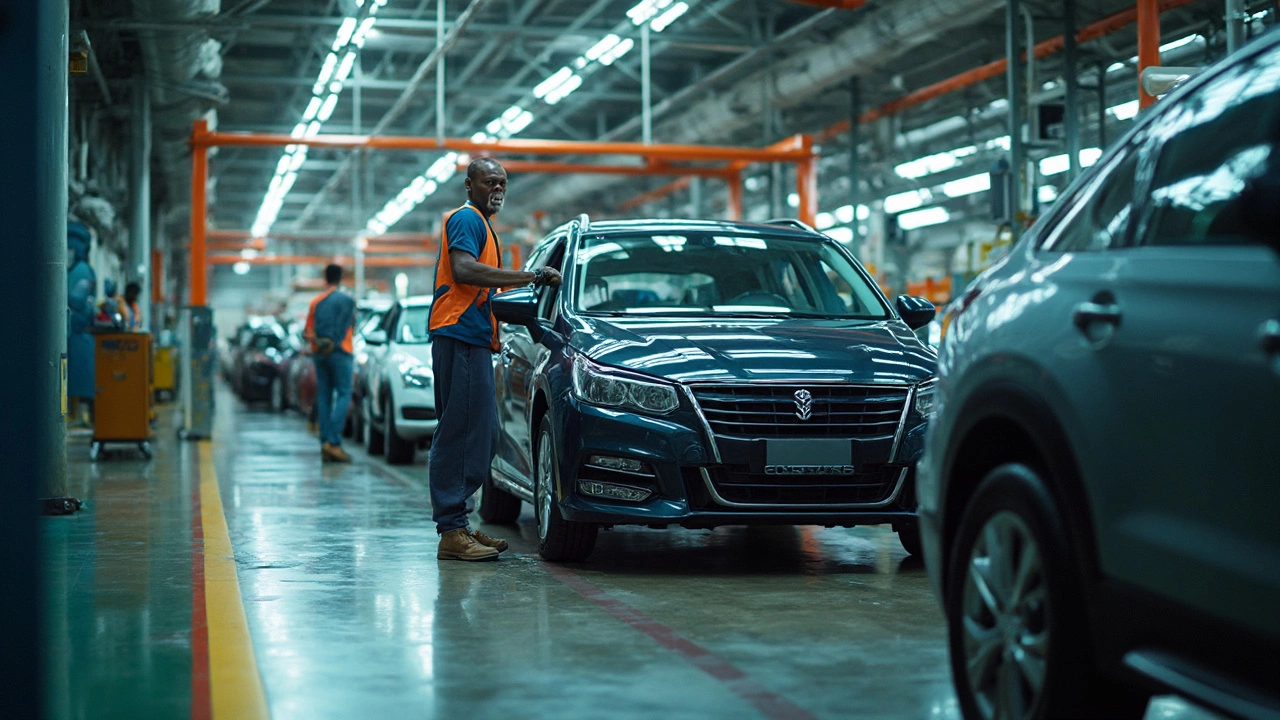- Where Does CVS Get Their Drugs From? Inside the Pharma Manufacturer Pipeline Apr 27, 2025
- Most Processed Foods: Surprising Facts and Their Global Impact Aug 6, 2025
- Is Mercedes Owned by Tata? Clearing Up the Confusion May 18, 2025
- What Is the 15-Year Car Rule in India? Everything You Need to Know Oct 30, 2025
- Most Popular Small Business in Manufacturing: What's Leading the Pack? Mar 16, 2025
Automobile Manufacturing in India: What’s Happening and Why It Matters
If you’ve ever wondered why you see more cars with "Made in India" stickers, you’re not alone. The Indian auto sector has grown fast, pulled in foreign investors, and become a major job creator. In this guide we’ll break down the biggest trends, the players you should know, and the hurdles the industry faces – all in plain language.
Key Trends Shaping the Industry
First off, electric vehicles (EVs) are no longer a niche. Companies like Tata Motors and Mahindra are launching affordable EVs, and the government’s push for lower emissions is speeding up the rollout. Second, the "Make in India" policy has lowered import duties on parts, encouraging global brands to set up plants here. That means you’ll see more Hyundai, Kia, and even BMW models rolling off Indian assembly lines.
Third, automation is getting a boost. Smart factories equipped with robotics are cutting down production time and waste. While this sounds high‑tech, it also means factories need workers who can manage and maintain those machines – a shift from manual labor to skilled tech roles.
Top Car Brands Manufactured in India (2025)
Curious about which brands actually build cars here? As of 2025, the list includes Tata, Mahindra, Maruti Suzuki, Hyundai, Kia, Honda, and even luxury names like Mercedes‑Benz and Audi. Most of these companies run multiple plants across states like Gujarat, Tamil Nadu, and Maharashtra. For example, Gujarat hosts the biggest Tata plant, churning out both passenger cars and commercial trucks.
If you’re looking for the most popular models, the Maruti Suzuki Swift and the Hyundai Creta top the sales charts. Both are assembled locally, keeping prices competitive compared to imported models.
Beyond passenger cars, India also produces a lot of two‑wheelers, buses, and commercial vehicles. This diversity helps the sector stay resilient when one market segment slows down.
So what does all this mean for you? Whether you’re buying a new car, scouting a job in manufacturing, or considering a partnership, knowing where the biggest plants are and which brands are expanding can give you a clear edge.
Stay tuned to policy updates – changes in tax rates, emission norms, or EV incentives can shift the market overnight. Keeping an eye on these signals will help you make smarter decisions, whether you’re a consumer or a business looking to invest.
Which Country Has Produced the Most Car Brands?
- Aarav Sekhar
- Dec 1, 2025
India has produced more car brands than any other country, with over 50 unique names since the 1940s. From the Ambassador to forgotten startups, India's auto history is a story of ambition, not just assembly.
Why Do Indian People Drive Toyotas? Car Trends Demystified
- Aarav Sekhar
- Jun 9, 2025
Toyota cars are everywhere on Indian roads, and it's not just by chance. This article unpacks the real reasons behind the brand's popularity in India, from practical design to resale value. We'll dig into how Toyota adjusts its cars for Indian roads, what influences buying decisions, and what Indian drivers genuinely look for. If you're wondering why your neighbor's got a Toyota badge on their car, this is your go-to read. Plus, you’ll pick up tips on choosing the right Toyota if you're thinking of joining the club.
Which Car Brand is Made-in-Nigeria? A Guide for Auto Enthusiasts
- Aarav Sekhar
- Apr 21, 2025
Curious about which car brands are really made in Nigeria? This article breaks down the top brands that assemble or manufacture cars right within the country. You'll find out which global companies bet big on Nigerian soil and what this means for buyers. Plus, you'll get tips on how to spot a true made-in-Nigeria car. Whether you're a buyer, seller, or just a fan, this is the hands-on info you need.
Does Sri Lanka Produce Cars? A Look into Automobile Manufacturing
- Aarav Sekhar
- Feb 10, 2025
Sri Lanka, often known for its spices and tea, doesn't typically come to mind when thinking about car production. However, local entrepreneurs and companies have made notable attempts to establish a presence in the automobile industry. Exploring the country's efforts and challenges, this article delves into Sri Lanka's unique role in car manufacturing. From local assembly plants to government initiatives, find out what makes Sri Lanka's automobile scene interesting.



